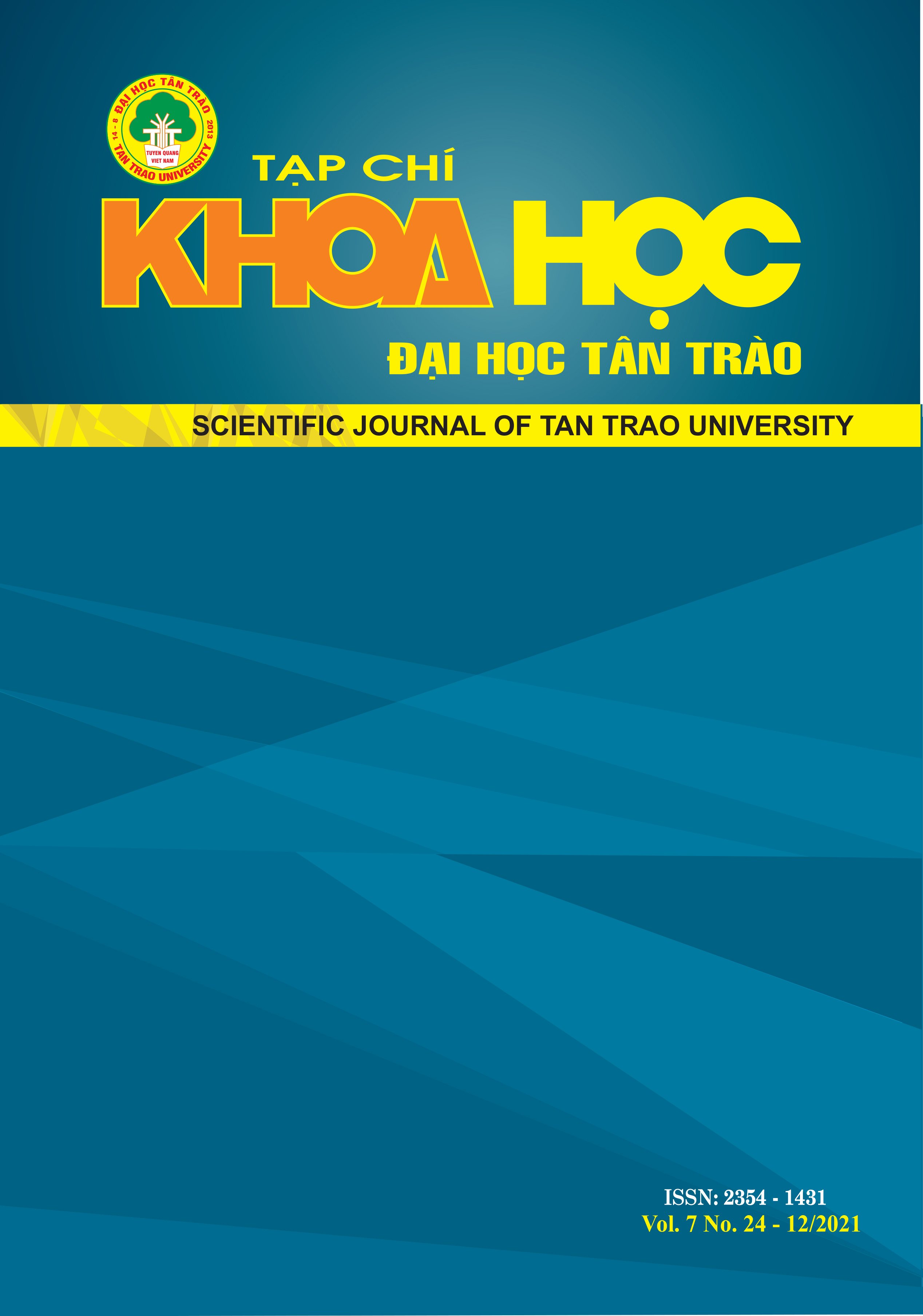GENETIC RELATIONSHIP OF SEVERAL LOCAL MELIENTHA SUAVIS PIERRE IN THE NOTHERN MOUTAINOUS REGION OF VIETNAM”
DOI:
https://doi.org/10.51453/2354-1431/2021/557Keywords:
Melientha suavis Pierre, Ä‘a dạng di truyá»n, Ä‘a dạng sinh há»c, hệ gen, cây bản địa.Abstract
The persent research aim to evaluate genetic diversity of several local Melientha suavis Pierre using SSR technique. By using 10 primer pairs to analyze 20 Melientha suavis Pierre lines shows that the number of Alleles were from 2 to 4 alleles and the polymorphic information contents ranged from 0,05 to 0,15. 41 alleles were identified with avarage of 0,15 alleles. The SSR technique shows that the differences among the varieties genes based on the number of alleles and the polymorphic information contents. It means that the gene of the local Melientha suavis Pierre has been divided into 5 groups. The genetic variation coefficience among largest genetic differences is about 3%.Downloads
References
[1] Mohd Anwar Ahmad, Rashmi Gaur (2012). Comparative biochemical and RAPD analysis in two varieties of rice (Oryza sativa) under arsenic stress by using various biomarkers. National Library of Medicine. USA, Volumes 217–218, 30 May 2012, pages 141–148.
[2] Sadaf Altaf, Muhammad M. K. (2014). Morphogenetic characterization of seeded and seedless varieties of Kinnow Mandarin (Citrus reticulata Blanco). Australian Jounal of Crop Science (AJCS) 2014 (11), pages 1542-1549.
[3] Kinley Dorji, Chinawat Yapwattanaphun (2015). Assessment of the genetic variability amongst mandarin (Citrus reticulata Blanco) accessions in Bhutan using AFLP markers. BMC Genetics (2015) 16:39 DOI 0.1186/s12863, pages 015-019.
[4] Behrouz Golein (2012). Assessing genetic variability in male sterile and low fertile citrus cultivars utilizing simple sequence repeat markers (SSRs). African Journal of Biotechnology, 11(7), pages 1632-1638.
[5] Nighat Sultana, Hannah V. Florance, Alex Johns, Nicholas Smirnoff (2015). Ascorbate deficiency influences the leaf cell wall glycoproteome in Arabidopsis thaliana. Plant, Cell and Environment (UK) 38, pages 375–384.
[6] Nguyen Huu Hiep,N.H., Dung, T.N., Son, D.T and Duoc, N.V (2004). Biodiversity of citrus trees in Go Quao district, Kien Giang province. Science Journal 2004 No 1, pp: 111-121.
[7] Loc, D.H., Vu, N.X., Thuy, V.T.T., Tam, N.T. (2017) Agro-biological characteristics and genetic relationships of some citrus varieties (Citrus Recutilata Blanco) in the Northern mountainous area Vietnam. Journal of Science and Technology, Thai Nguyen University Publishing House, 164(04): pp. – 182.
[8] Mau, C.H (2008). Modern methods of genetic analysis in plant breeding. Thai Nguyen University Publishing House. 50 (2008), pp: 55 – 107.
[9] Shidaka T., Omura M (1989). Control of embryogenesis in Citrus cell culture. Regeneration from protoplasts and attempts to establish a callus bank. Bull Fruit Tree Res. Stn. Okitsssu, 16, pages 1-17.
[10] Goh Pik Seah ELCY, Mansor Clyde MAHANI, Yong-Jin PARK, Normah Mohd NOOR (2011). Simple Sequence Repeat (SSR) profiling of ultivated Limau Madu (Citrus reticulata Blanco) in Malaysia. Biotechnol. Fac. Sci. Technol., Univ.Kebangsaan Malaysia,43600UKM Bangi, Selangor, Malaysia Fruits, pages 67-74.
[11] Xiao-Yan Yang Jin-Xia Xie, Fang-Fang Wang, Jing Zhong, Yong-Zhong Liu, Shu-Ang Peng (2011). Comparison of ascorbate metabolism in fruits of two citrus species with obvious difference in ascorbate content in pulp. Journal of Plant Physiology 168 (02), pages 2196–2205.
[12] Wallace, H. M. (2002). Effect of self – pollination and cross – pollination on Clementine madarin. University of the Sunshine Coast, Austraylia, pages 56–57.
Downloads
Published
How to Cite
Issue
Section
License

This work is licensed under a Creative Commons Attribution-ShareAlike 4.0 International License.
All articles published in SJTTU are licensed under a Creative Commons Attribution-ShareAlike 4.0 International (CC BY-SA) license. This means anyone is free to copy, transform, or redistribute articles for any lawful purpose in any medium, provided they give appropriate attribution to the original author(s) and SJTTU, link to the license, indicate if changes were made, and redistribute any derivative work under the same license.
Copyright on articles is retained by the respective author(s), without restrictions. A non-exclusive license is granted to SJTTU to publish the article and identify itself as its original publisher, along with the commercial right to include the article in a hardcopy issue for sale to libraries and individuals.
Although the conditions of the CC BY-SA license don't apply to authors (as the copyright holder of your article, you have no restrictions on your rights), by submitting to SJTTU, authors recognize the rights of readers, and must grant any third party the right to use their article to the extent provided by the license.


